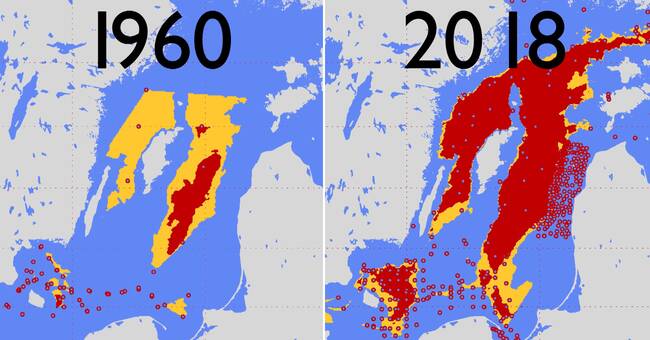Today, about 18 percent of the Baltic Proper (from the southern Åland Sea to the Danish Strait) suffers from completely oxygen-free conditions.
In addition, there is a lack of oxygen at about 31 percent of the bottoms.
This also causes the bottoms to release nutrients that increase eutrophication problems.
- In oxygen-free water, no higher forms of plants and animals can survive.
In deep waters where there is a lack of oxygen, for example, the growth and health of the cod are affected.
Benthic animal communities can be wiped out, which leads to food shortages for other species, says Martin Hansson, in a press release.
The Baltic Sea is also sensitive to the lack of oxygen as new oxygen only enters the sea via the Danish Strait in special weather conditions.
The video below explains the bottom death in the Baltic Sea.
Javascript is disabled
Javascript must be turned on to play video
Read more about browser support
The browser is not supported
SVT does not support playback in your browser.
We therefore recommend that you switch to another browser.
Read more about browser support
Why is the bottom of the Baltic Sea dying?
Photo: SVT

